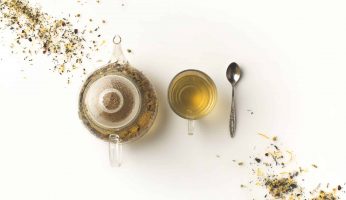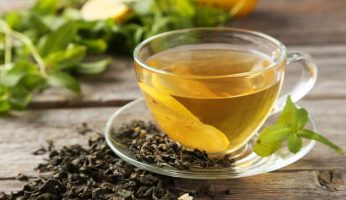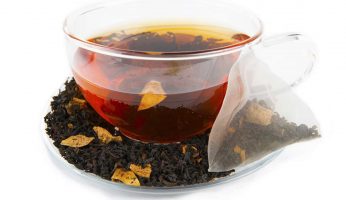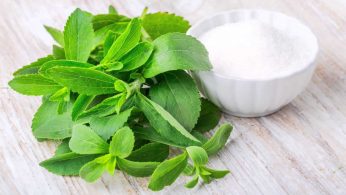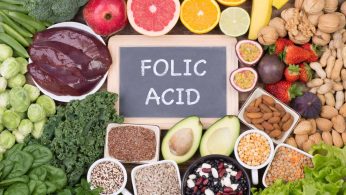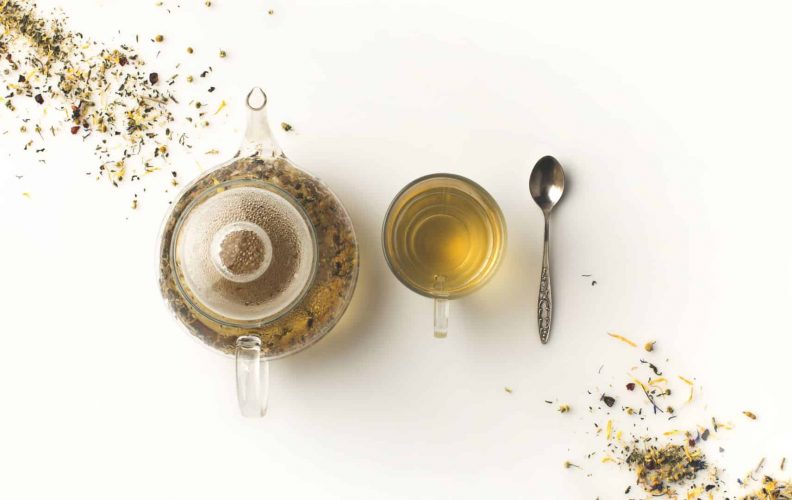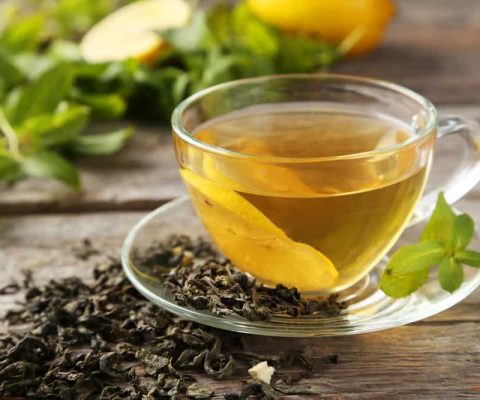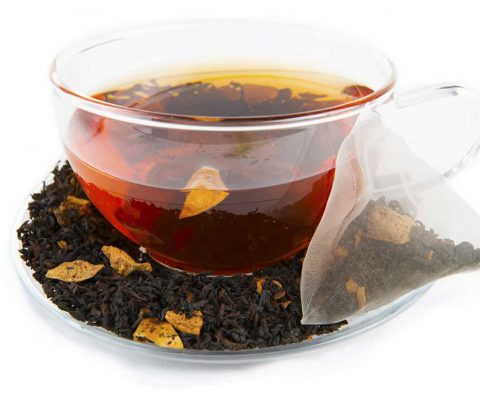Black Tea: The Definitive Guide
Disclosure: We use affiliate links and may receive a small commission on purchases.
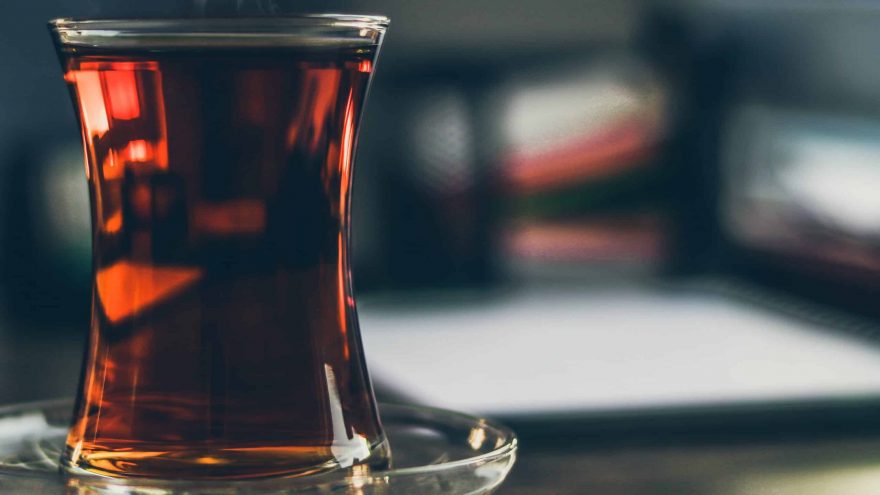 Black Tea: The Definitive Guide
thefitbay.com
Black Tea: The Definitive Guide
thefitbay.com
If you’re up on the latest health trends or are a bit of a tea fanatic, you likely have heard of black tea. Otherwise, you may be thinking, “Well, I’ve heard of black coffee… but black tea?” If you’re the latter, don’t be fooled, black tea isn’t just a matter of not adding milk and sugar the way black coffee is.
Quite the opposite – you can fill your black tea with all the milk and sugar you want, although maybe you shouldn’t if you’re health-conscious.
Black tea has a special connection to China, as you might suspect. “Not for all the tea in China” is a phrase you may have come across – the Chinese are huge tea drinkers, it’s their most popular drink, in fact. (1) They’re also the country that originally discovered black tea, as we’ll see a little later.
Did you know that 90 percent of tea sold in the West is black tea? (2) You may have been drinking it, and getting those health benefits that we’ll dive more into later, without even realizing it.
What Exactly Is Black Tea?
Black tea is also known as red tea. Why? Because that’s the color the liquid tea is when it’s in your cup. The commonly used ‘black’ moniker comes from the color of the tea leaves. The leaves don’t grow on the tea plant in this shade, however.
Growing from the plant Camellia sinensis assamica, the naturally green leaves turn black after being rolled and left out to oxidize (3). Green tea, on the other hand, comes from a smaller version of this plant, which still falls under the Camellia sinensis umbrella, but doesn’t undergo the oxidation process, and so stays its natural shade.
Camellia sinensis plants grow in East Asia, and they’re believed to have originated from the Southwestern region of China. They’re little evergreens, and producers use their leaf buds and leaves to make the tea we love.
This wide-ranging species of plant gives us four distinct teas:
- Black
- White
- Green
- Oolong
You may be wondering how a manufacturer or brewer can make four different and totally distinct teas from just one plant species. Answer: It’s all in the process!
Oxidation is key – the leaves are taken, rolled and allowed to oxidize, then they undergo a heat process and are dried. After that, they’re ready for brewing. This process is what really makes black tea special; it gives the drink a crazy amount of flavor that’s more long-lasting than in other teas.
Other teas either stay closer to their natural state or are only partially oxidized, as is the case with oolong.
A Brief History of Black Tea
Black tea is actually relatively new compared to other teas, as it wasn’t discovered until the mid-17th century. The popular tale goes that an army made an unscheduled stop not far from a tea factory. This led to a delay in production, and tea leaves were left laying out in the sun longer than they should’ve been.
The tea leaves changed color, and a farmer, thinking they were going bad, attempted to save them from being thrown away by heating them over a fire. Voila! The original black tea was born. This tea was called Lapsang Souchong.
Other teas have been around a lot longer – green tea can be dated back as far as 141 B.C., and had already been introduced to the West to a small extent through Portuguese merchants who were visiting Lebanon in the 16th century. These merchants didn’t make the tea mainstream, though.
Tea didn’t get into Europe until the 1660s. It’s widely believed that Dutch merchants were the ones who brought it to the continent from the East, and tea was very much a Dutch thing for a while after.
Interestingly, Portugal was the country that created the tradition of high tea, despite this nowadays being considered stereotypically British.
Tea arrived in the U.S. in 1650, brought by colonists to New Amsterdam – which you might now know as New York. You can see the Dutch connection right there in the city’s former name.
Drinking tea became popular in the U.K. in the 17th century, as the British set up tea production in India, originally with the intention of competing with China.
As this was happening, the British discovered a new type of tea plant, and, you guessed it, it became a black tea variety. This plant was discovered in Assam, India, while previous tea production had been in Darjeeling. The tea was called Assamica or Assam tea, and its flavor was so popular that the British began to widely use it in their breakfast teas.
It didn’t take long between the discovery of black tea for it to become a global favorite.
Recap
Black tea is grown from Camellia sinensis plants in East Asia, and the first black tea was developed in China in the mid-17th century. The original tea was called Lapsang Souchong. The Camellia sinensis is capable of growing black, green, white, and oolong tea.
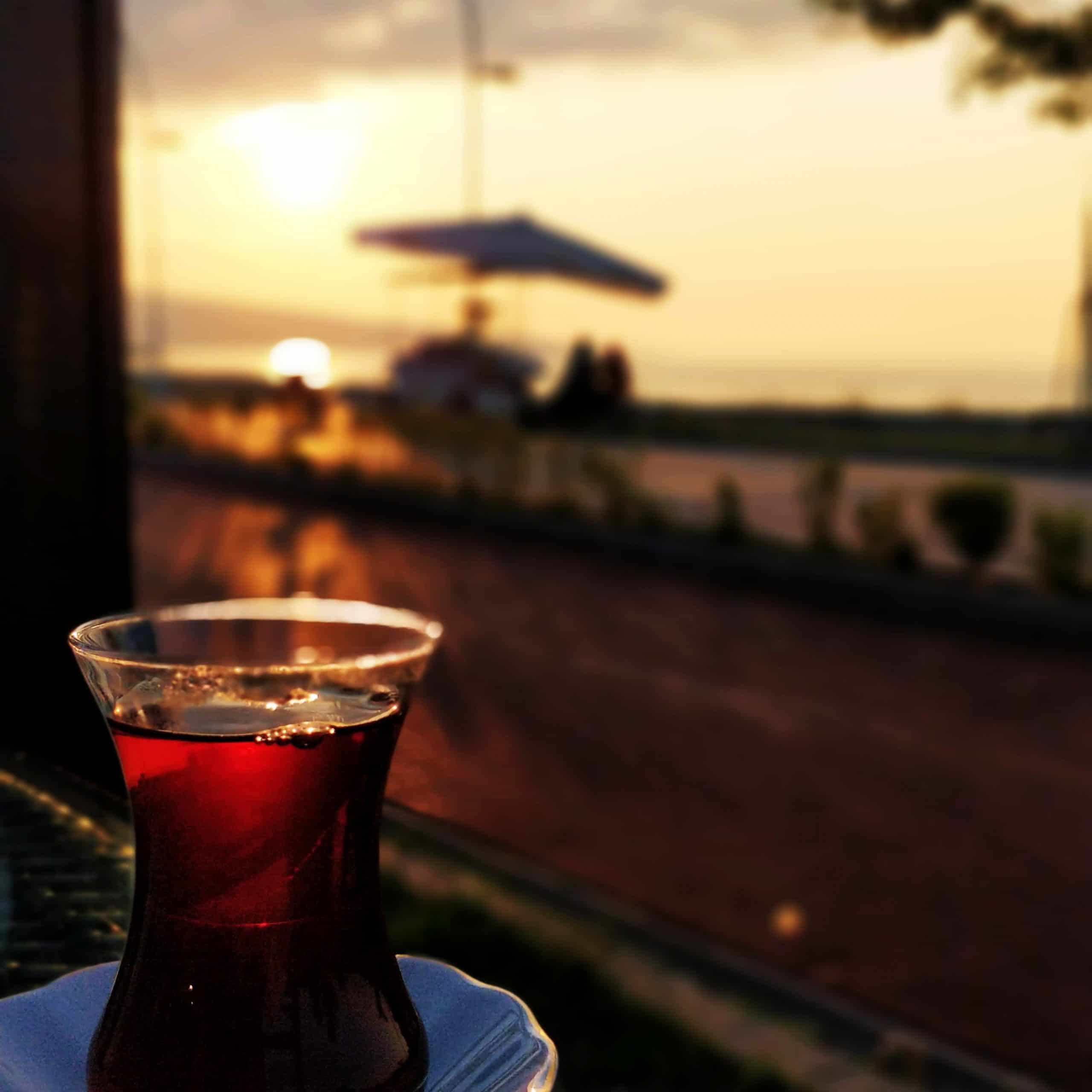
Black Tea Benefits
So, is black tea good for you? Yes and no – there are plenty of black tea benefits, and the best part is, a lot of studies have been done to find these.
This means that there’s actual scientific backing to these health advantages. It’s also a huge bonus if you’re the type of person who already drinks black tea every day – which you may be without realizing (more on that later!)
When you’re drinking black tea for its health benefits, do remember that, like any healthy food or drink, its benefits don’t exist in a vacuum. You need a healthy balanced diet if you want to get the maximum benefits out of black tea.
So what is black tea good for? Some of the reported black tea health benefits include:
- Contains antioxidants
- Weight regulation
- Reduced risk of type 2 diabetes
- Lowered risk of a stroke
- Strengthen the immune system
- Increase in energy
- Lower blood pressure
- Decrease the chance of heart disease
- May help prevent osteoporosis
Black Tea Contains Antioxidants
“Oooooh, antioxidants,” you might be thinking, because ‘antioxidants’ has been quite the buzzword for a while. Not everyone knows exactly what they are, though.
To put it simply, antioxidants are molecules that fight free radical compounds in living organisms. These compounds can be dangerous if allowed to reach a high level. When we say ‘dangerous’ here, we mean the potential causes of diseases such as cancer and diabetes. (4)
There are different types of antioxidants, though, and those specific to the leaves of the Camellia sinensis or tea plant are polyphenols. They’ve also been found in foods such as dark chocolate, cloves, and almonds.
It’s these polyphenols in the antioxidants in black tea that may benefit:
Weight Regulation
One study found that a higher intake of polyphenols was associated with a lower BMI ( body mass index) and waist circumference. (5) In a world where obesity levels are rising and fad diets are everywhere, any assistance in weight regulation is much appreciated.
Type 2 Diabetes
Researchers believe that polyphenols may help slow down the rate the human body digests sugar and may boost insulin sensitivity as well, thus lowering the risk of the disease. (6)
Generally, consuming a diet rich in antioxidants can reduce the risk of several diseases. Alongside your black tea, you should always be on the lookout for antioxidant-rich foods.
Lowered Risk of Stroke
A study by Arab L et al. entitled “Green and black tea consumption and risk of stroke: a meta-analysis” found that those who drank three or more cups of tea per day had a 21 percent lower risk of a stroke. (7) This was found for both black and green teas and occurred regardless of the participant’s country of origin.
Strengthened Immune System
We’ve talked about a variety of diseases, but what does all the work to fight those diseases? Your immune system.
If your immune system isn’t strong, you’ll pick up the smallest of illnesses, such as the common cold, more regularly, and your risk of contracting more serious diseases increases.
Black tea provides you with a whole host of compounds that’ll help strengthen your immune system: the polyphenols we talked about before, alongside flavonoids (more on this below) and L-theanine. (8,9)
In particular, L-theanine is an amino acid that was found to enhance innate immune function in a study by Chengjian Li et al. (10)
Higher Energy Levels
Most of you know that black tea contains caffeine, so the assumption that this gives you energy, right? Well, yes and no.
Some will argue that it makes you feel less tired rather than giving you energy since caffeine is a stimulant rather than a provider of long-term energy to the body, such as the likes of carbohydrates, fat, and protein.
Caffeine itself isn’t the energy source. Instead, it aids in the release of adrenaline, which helps to release sugar into the bloodstream, thus providing energy. (11)
According to the FDA, the average cup of black tea contains 47 milligrams of caffeine for every 8-ounce. (12) This is higher than other teas, such as green and oolong. It does have less caffeine than coffee, however. This means that you get a pretty decent energy buzz, but it isn’t the most overwhelming one out there. In fact, the L-theanine in black tea provides a slight balance to the boost.
There’s also another little chemical that may get forgotten in the shadow of caffeine: theophylline. This is a chemical that naturally occurs in cocoa beans as well as brewed tea. It provides alertness and increases your heart rate. (13,14)
The upshot is that there’s no doubt that, due to the compounds in black tea, if you want a well-balanced boost that isn’t as strong as coffee, grab a cup of black tea.
May Lower Blood Pressure
A study was carried out with 95 male and female participants, who were regular tea drinkers and split into two groups. (15)
One group drank three cups of black tea per day for six months, while the other drank a placebo. The placebo had a similar caffeine content and was flavored to taste the same.
By the end of the study, those who had drank black tea had dropped two to three points in their average systolic (pressure during the heart contraction) blood pressure level. Their diastolic (blood pressure between heart contractions) blood pressure level had dropped around two points.
Since high blood pressure is a big health issue and can lead to issues such as a stroke and heart attack, why not try a few cups of black tea a day? (16)
May Decrease Heart Disease
There’s evidence to suggest that three cups of black tea per day can help reduce the risk of coronary heart disease. This is a result of the antioxidants in the tea, specifically the flavonoids. According to Chong-Zhi Wang et al., there’s evidence to suggest that herbal flavonoids have cardioprotective effects. (17)
This is important as heart disease is currently prevalent across the globe. It’s the leading cause of death in the United States, for both men and women, and kills someone every 37 seconds. (18)
May Help Prevent Osteoporosis
In a study by Kang Sun et al., a connection was found between black tea consumption and a reduced risk of osteoporosis. (19) The researchers do state how this connection is formed requires further research, though.
Regardless, osteoporosis is a serious condition, one that particularly affects women, and any potential reduction in risk is a positive thing.
Black Tea Risks and Side Effects
As with any food or drink, black tea isn’t perfect, and with a high level of consumption comes some potential side effects or health risks.
After reading the health benefits, you may want to sit down and drink ten cups of that wonderful black tea flavor. Before you do, be aware of these:
- Anxiety
- Nausea
- Reduction in iron absorption
- Headaches
- Interference with medication
- Sleep deprivation
- Pregnancy risks
Anxiety
So as we’re clear, the potential increase in anxiety from drinking black tea is due to the caffeine content rather than the black tea itself.
It’s also a bigger risk in those that are already susceptible to anxiety. If you’re a particularly calm and stable individual, this probably won’t be a problem for you; however, that doesn’t mean anxiety can’t or won’t develop, especially if you don’t consume much caffeine already.
Since caffeine is a stimulant, and we know of its presence in black tea, its consumption can make you more alert and energetic. On the other hand, this alertness comes about because your ‘fight or flight’ instinct is triggered, which is controlled by the sympathetic nervous system. (20)
It’s how your brain reacts to this response that can trigger a feeling of anxiety, which may or not be a real threat. After all, the brain won’t consider drinking black tea – caffeine – as a threat, per se.
However, if you’re an anxious person, this extra stimulation may bombard your senses and make you jittery and tense. It may also affect your focus.
This anxiety is more associated with coffee – as coffee has a higher caffeine level than tea – but overconsumption of black tea could lead to the same issue. Moderation is key, especially as black tea contains more caffeine than green tea, oolong tea, and white tea.
Nausea
If you’ve already tried black tea, you’ll have noticed it has a more bitter taste compared to other teas. This bitter taste is caused by tannin, a common bitter compound found in foods like grapes and cranberries. You might enjoy this flavor, but it does have the downside of making some people feel sick.
There’s no hard and fast rule on how quickly nausea can develop, but knowing how tannins cause nausea might guide you on how much black tea you can handle.
Tannins irritate digestive tissue, which may make you feel sick or even lead to a bad stomach ache. (21)
If you want to avoid this nausea, the most obvious answer is to drink less. If you simply can’t live without a little black tea but still experience nausea, try mixing the black tea with milk or eating something with it. Tannins bind to the carbohydrates and proteins in food, so it’ll take the edge off.
Reduction in Iron Absorption
Tannins are the culprits again here. They’re known to bind to iron molecules, thus meaning your body can’t absorb the iron. (22)
It’s not common for drinking black tea to be the sole cause of an iron deficiency, but when you think of how common iron deficiency is, it’s safe to say that drinking too much black tea doesn’t help the situation.
The best thing to do is have your tea away from when you eat, to prevent the tannins from binding to iron.
Headaches
Caffeine really is a double-edged sword, and this is an interesting point because caffeine can be both a reliever and cause of headaches.
It’s typical when you develop a headache for the blood vessels to enlarge. Caffeine, however, narrows blood vessels and restricts blood flow. (23) In this way, it can relieve the pain of a headache.
Enter ‘rebound headache,’ which can occur if you consume caffeine too often, especially if you rely on it for medicinal purposes. These are also connected with overusing medication and combining medication with caffeine (24).
If you’re getting headaches frequently, cut your caffeine intake and see what happens, although be aware of the negative effects of caffeine withdrawal, such as, you guessed it, headaches, as well as: (25)
- Anxiety
- Fatigue
- Low mood
- Tremors
- Irritability
- Concentration problems
- Low energy
Interference with Medication
As you might have noticed, black tea is pretty potent, both in taste and it’s side effects. When a food or drink is this potent, it’s only natural to assume that it interacts with other chemicals in your body, but what about those chemicals you’ve ingested in the form of medication?
Well, it’s a mixed bag. Some medications aren’t an issue, others may stop working, and others will lead to adverse reactions. Some medications may even cause the caffeine to stick around in your body longer than it naturally should, thus stretching out the side effects of caffeine, such as nervousness.
For instance, if you’re on blood thinners, there are reports to say that caffeine, and thus black tea, can actually cause the blood to clot, especially during exercise. (26)
Also, since we’ve explored how the caffeine in black tea can lower blood pressure, if you’re taking medication for high blood pressure, you’re in danger of your blood pressure dropping too low. The result of this could cause damage to the heart and brain. (27)
Black Tea and Sleep Deprivation
It’s thought that the caffeine in black tea inhibits the body’s ability to produce melatonin, which is the messenger hormone to regulate sleep. (28)
While some may still believe that they get enough sleep and don’t have problems falling asleep, that isn’t to say they’re getting restful sleep. Your body needs to experience all the sleep cycles for your body to rejuvenate. In particular, the N3 and REM stages for blood pressure regulation, hormone levels, and energy to the brain and body. (29)
There’s no specific rule as to when you should stop drinking black tea in the day to improve your sleep. For some, not consuming any black tea (and, therefore, caffeine) after around midday works, but others report later in the afternoon.
Our advice? If you have trouble sleeping and drink three or more cups of black tea each day, consider reducing the intake or stop drinking tea earlier, or both.
Pregnancy Risks
The sensible among you will already have assumed that caffeine consumption through black tea is a big no-no for pregnant ladies. Although experts do warn of the dangers of birth defects and pregnancy linked with black tea, we’re limited in the advice of how much is too much. (30,31)
If you are pregnant, you need to consider all sources of caffeine. The common ones are coffee and tea, of course, but are you aware of the caffeine presence in chocolate and energy drinks?
To be safe, stay away from black tea as much as possible if you’re pregnant. Even so, experts advise that under 200–300mg a day is safe. (32)
Recap
Black tea has been shown to contain antioxidants, lower the risk of stroke, strengthen the immune system, increase energy levels, lower blood pressure and heart disease, and may decrease the risk of osteoporosis. On the other hand, it may cause anxiety and cause nausea and headaches, as well as interfere with other medications.
Different Types of Black Tea Plant
You’re forgiven for thinking that all black tea is the same. Until we researched black tea, we were in the dark (no pun intended) about it, too.
But did you know that many black teas are named after the regions their plants were grown in? Let’s take a look at some of the more popular black teas:
Lapsang Souchong Black Tea
Lapsang Souchong is thought to be the original black tea. As we touched on earlier, it was accidentally discovered when a farmer left the leaves out for too long.
It comes from the Fujian province of China and is smoke-dried over a pinewood fire. This process is what gives the tea its unique smoky pine flavor. Its distinct taste isn’t for everyone, but you never know, you may be in that select group that loves it.
Assam Black Tea
While the Chinese were already producing plenty of tea, the British East India company wanted a slice of the pie; however, Chinese tea plants didn’t take well to the soil in Assam. In the end, it was the Camellia sinensis plant, native to the region, that produced this popular black tea.
Assam black tea is very red and has a strong malty flavor. Due to the strength of its taste, people generally prefer to add milk and sugar. In fact, Assam black tea is the base of a lot of tea blends and breakfast teas, including Irish Breakfast Tea and Earl Grey.
Darjeeling Black Tea
Another black tea grown in India, Darjeeling tea comes from the Darjeeling district of West Bengal. Although it’s grown in India, the tea comes from the Chinese Camellia sinensis plant, rather than the Camellia sinensis assamica.
This aromatic black tea has a unique wine-like sweetness and is considered one of the best teas around. For Darjeeling, there are two growing seasons, called the ‘first flush,’ which occurs in the spring, and the ‘second flush,’ which occurs in early summer.
The taste of this black tea will depend on which flush it was harvested in. Darjeeling from the first flush is more delicate and floral, while the black tea leaves from the second flush are more mature and full-bodied.
Ceylon Black Tea
Also known as Sri Lankan tea, as it’s a native tea there (Sri Lanka was previously called ‘Ceylon’), Ceylon black tea has one of the widest flavor profiles of the black teas on our list.
If you’ve drunk an iced tea, you’ve most likely drunk Ceylon black tea, as it’s very popularly used this way.
The flavor you get with your Ceylon tea will depend on where it was grown in Sri Lanka, and it’s categorized by three levels of altitude:
- High-grown: Above 4,000 feet
- Medium-grown: 2,000–4,000 feet
- Low-grown: Sea level–2,000 feet
Ceylon black tea is mainly grown in the following regions:
- Nuwara Eliya
- Uva
- Dimbula
- Uda Pussellawa
- Kandy
- Ruhuna
- Sabaragamuwa
Nuwara Eliya and Uva
These are two high-grow regions, with Nuwara Eliya being the highest. Ceylon black tea grown in Nuwara Eliya is commonly used in iced tea and combined with lemon, due to its light, floral aroma. Uva’s tea is sweet and woodsy and mixes well with milk.
Dimbula
Dimbula is a mountainous region, so elevation can vary but often falls into high. You can get both full-bodied and delicate black teas from Dimbula, but they all tend to be mellow.
Uda Pussellawa and Kandy
These are two medium-grown regions. Uda Pussellawa’s tea has a strong flavor and an interesting pink shade, while Kandy’s tea is malty and has a fuller body.
Ruhuna and Sabaragamuwa
These final two are low-grown regions, and their black teas are packed with flavor, with notes covering caramel and chocolate. They also come in gorgeous orange and red tones.
Golden Monkey Black Tea
This amusingly named black tea is the baby of our list – it’s barely a few decades old. It’s grown in the Yunnan and Fujian provinces in China, and its name partly comes from the pale-gold threading in the tea leaves. The ‘monkey’ part of its name comes from the shape of the tea leaves – they look like monkey paws.
Although the name is used for a variety of teas, general Golden Monkey Tea typically has light peach notes, with a hint of honey.
Yunnan Black Tea
Also known as Dianhong black tea, Yunnan black tea, from the Yunnan province in China, is grown in the region of Lincang. Lincang is a very high region, reaching up to 1,900 meters above sea level. The climate and altitude produce a deep red tea that is smoky, with layers of cocoa and peppery notes.
Rize Black Tea or Turkish Black Tea
In 2016, Turkey was the largest consumer of tea in the world per capita and, in 2004, produced 6.4 percent of the world’s tea total. (33) So, it stands to reason that they have some great teas of their own.
Rize tea is grown in the province of the same name, and the mild climate produces a lovely mahogany-colored black tea. This tea is so strong in flavor that it’s only served in very small cups and is also served boiling. So hot that you likely won’t be able to hold the cup in your palms. It’s also served with sugar but without milk.
Keemun Black Tea
This black tea is named after the town of Keemun, which is a large tea-producing area of China. It’s also one of the newer teas, first being brewed in 1875 under the name Qimen tea. This is a light smoky tea that tastes malty with a hint of nuttiness.
Black Tea Blends
Let’s now take a look at our less pure black teas, a variety of blends that are still delicious and provide all the goodness that consuming black tea does.
Earl Grey
Associated with all things English, Earl Grey is believed to be named after the 19th-century British Prime Minister of the same name.
This tea is made from a mix of Keemun tea and bergamot oil, which is an oil made from a specific type of orange. It’s this oil that gives the tea its distinctive citrus flavor and aroma.
There are also variations of the Earl Grey, such as Lady Grey, which uses Seville oranges instead of bergamot.
As Earl Grey isn’t a trademark, many different brands have created their version of the tea, with varying ingredients.
English Breakfast Black Tea
Drinking black tea for breakfast has been a norm in the UK and Ireland for over two centuries now, so it’s not surprising that there would be a blend considered as the perfect breakfast brew.
English breakfast tea is a blend of Ceylon, Kenya and Assam teas, and is typically served with milk and sugar. If you purchase a fancier brand, you may also find Keemun tea added.
This black tea blend is often described as being full and rich with floral undertones. Adding the milk brings out its honey-like aroma. It’s made to go with hearty and heavy foods – the traditional English breakfast, for example.
Irish Breakfast Black Tea
Irish breakfast tea is a blend of black teas that tends to vary from cup-to-cup and brand-to-brand, but Assam teas tend to be the most used.
Irish breakfast tea is stronger than its English counterpart, with a malty, robust flavor, and so is meant to be mixed with milk. Not that that stops everyone from drinking it plain!
Despite its traditional name, it is not typically referred to as a ‘breakfast tea’ by those who drink it. That’s because it’s the norm to drink this tea throughout the day.
Masala Chai Blend
Let’s head back to Asia with a blend from the Indian subcontinent. Masala Chai is a really special blend made from a mixture of black tea and traditional herbs and spices. It’s served with milk, and sugar can be added if preferred.
The traditional spice mixture used in this black tea includes cinnamon, ginger, black peppercorn, green cardamom, and ground cloves. There’s also the potential to use a whole host of other ingredients, including honey, vanilla, and black cardamom. The potential is limitless with this blend.
There are options for chai blends in the West, although many brands remove the traditional spices in favor of flavors the Western palate is more accustomed to, such as chocolate.
Different Black Tea Forms
Even if you’ve found the perfect black tea blend, you still need to decide which form to buy it in. Confused as to what’s best? Let’s take a look at the options:
- Black tea leaves
- Teabags
- Decaffeinated
Loose-Leaf Black Tea
This is generally considered to be the highest-quality form of tea. With loose-leaf tea, you’re getting bigger, unbroken tea leaves, although some tea leaves do naturally break during processing.
When you use loose leaves, they have the space to expand as much as possible in the water and can also absorb more. With this option, you’re getting all the vitamins and minerals possible.
If you want to bring your tea to its full potential, we highly recommend purchasing it in its loose-leaf form.
Tea Bags
Teabags trump loose-leaf tea in one particular way – convenience. You know exactly how much tea to use, you get a built-in infuser, and it’s easy to remove when you’re done. That’s nothing to sneeze at.
Also, tea bags are ideal for brewing iced tea. Iced tea can be a real pain to deal with, especially if you’re adding extra flavors, so tea bags will really help you out here. That’s not to mention the added convenience, too.
Decaffeinated Black Tea
Some herbal teas can be grown in caffeine-free versions, black tea, on the other hand, doesn’t have a natural form like this. So, the caffeine needs to be removed or reduced later in the process.
We’ve covered the risks and side effects of how caffeine can cause issues such as increased anxiety and nervousness. Some people also have heart conditions and so try to avoid stimulants, such as caffeine, as much as possible.
If these are issues you suffer from, it’s completely understandable that you’d want to find a better option while still enjoying the flavor of black tea.
There is a downside, though, and that’s the process involved in decaffeinating the coffee. Tea leaves are deprived of their caffeine through being soaked and stripped through solvents. Not all caffeine is removed in the process, some naturally gets left behind, but so does some of the solvent.
This stripping process can lead to some of the good stuff also being removed, so it’s worth noting that some of the health benefits may be dulled as a result.
If you really want to drink a decaf version, no problem, but be aware of the process.
Black Tea Nutritional Values
This black tea nutritional information is based on one cup of black tea brewed with tap water – one cup represents8 fluid ounces or 237 grams.
Black Tea Calories and Macronutrient Information
- Energy: 2.37 calories or 9.48 kilojoules
- Carbohydrates: 0.711 g
- Protein: 0 g
- Fiber: 0 g
- Fat: 0 g
- Caffeine: 47.4 mg
Black Tea Micronutrient Information
- Phosphorous: 2.37 mg
- Potassium: 87.7 mg
- Sodium: 7.11 mg
- Copper: 0.024 mg
- Manganese: 0.519 mg
- Riboflavin: 0.033 mg
- Theobromine: 4.74 mg
- Folate: 11.9 mcg
Black Tea Nutrition Analysis
Firstly, we can see that black tea has very few calories due to the lack of carbs, protein, and fat. What some fail to take into account when counting calories, though, are the calories in the added milk and sugar.
The caffeine content is fairly high. Not as high as coffee, but higher than green, white, and oolong tea. (34)
Most of the minerals and micronutrients are low, with the stand-out one being manganese. Manganese is an important co-nutrient for enzymes, with the added benefit of aiding in bone health, but excess consumption can be dangerous to the nervous system. (35)
Although the level of potassium in black tea is low, it’s worth remembering that black tea is a source of this vital nutrient. Potassium is an electrolyte that conducts electrical impulses in the body and aids in the fight against osteoporosis and kidney stones and can help to reduce the risk of blood pressure and strokes. (36,37,38,39)
Recap
There are numerous black teas available, ranging from countries such as India to Turkey. These teas have very different flavors, and some are designed to mix with sugar or milk. There’s also a wide variety of black tea blends, including popular breakfast teas in the United Kingdom and Ireland.
Black tea comes in forms such as loose leaves and tea bags and is a low-calorie drink that’s high in manganese with a reasonable amount of potassium.
How to Brew Black Tea
Black tea can be brewed and consumed in a variety of ways, but here’s a simple and basic method to follow:
Step 1: Boil the Water
Before you fill the kettle, allow the cold faucet to run for a little bit, as this oxygenates the water.
Bear in mind that black tea requires hotter water than, say, green or white tea. For this reason, let the water in the kettle or pot reach a rolling boil and use it immediately.
Step 2: Prepare the Tea
While the water is boiling, place your black tea in your chosen vessel.
If you’re using loose leaves, you may need an additional mug to strain into. You can also pre-warm the mug or cup if you prefer, but it’s not necessary to do so.
If you’re using loose leaves, measure out 2–3 grams per 6 ounces of water. As leaves come in all shapes and sizes, you should use a scale rather than trying to guess the weight.
Remember that the more tea leaves/bags you use, the stronger your cup will be.
Tip: Use a Ceramic or Cast Iron Teapot
Ceramic and cast iron will retain heat the best. They can also be used to brew any kind of tea, so if you have a craving for black tea one day and green tea another, you’re covered.
They also won’t contain GMOs and must be grown in a way that’s sustainable. This not only means that you’re doing right by the environment, but you’re also getting the most naturally pure form of tea.
Step 3: Pour the Boiling Water Over the Tea
The tea always goes first, and the water second. This is because the movement of the water pouring onto the tea leaves will stimulate them and release the flavor.
Tip: Infusers and Strainers Mean More Flavor
It’s totally fine to just brew your tea leaves in the cup, but if you want the full burst of flavor, use a basket-style infuser.
Step 4: Leave to Brew
The amount of brewing time required will depend on the type of tea:
- Darjeeling: 3 minutes
- Yunnan: 3 minutes
- English Breakfast: 4 minutes
- Earl Grey: 5 minutes
Generally, three to five minutes will cover all black teas, but look up your tea type if you want an exact number – or it may be on the packaging.
If you’re completely stumped, brew for three minutes and then taste-test every 20–30 seconds until you’ve found the exact taste you like. Just remember that time for future brewing.
Covering the cup with a towel, for example, will allow the cup or teapot to retain heat.
Step 5: Remove the Tea and Drink Up
If it’s a tea bag, you can just lift it out with a spoon; if you’re using loose leaves, you may have to strain the liquid or use an infuser.
Finally, enjoy your lovely fresh cup of black tea!
Should I Buy Organic Tea?
If you aren’t sure what the difference is between organic and non-organic, organic black tea is grown on land that’s pesticide and herbicide-free. In essence, this means there’s no risk of you consuming nasty chemicals when drinking your black tea.
Even if you’re drinking decaffeinated black tea, it might be as chemical-free as you expect since solvents are used to strip the caffeine out.
How to Drink Black Tea
Now you’re a master tea brewer, consider adding some variety to your black tea. Of course, it’s more than fine to drink black tea as is without any extras, and many enjoy that style.
Black Tea on Its Own
Just your tea and your water is something purists and tea connoisseurs will tell you is the true way to drink your black tea. All of the health benefits we’ve outlined will be at their most beneficial when the tea is in a pure state.
On the flip side, you may find some of the side effects more potent when drinking black tea pure. You’re more likely to feel nauseous, especially if you drink on an empty stomach.
You’re also more likely to feel the effects of the caffeine, which can make you jittery and nervous. This may not be your individual experience, you may not feel any side effects at all, but if you’re switching to pure black tea, watch out for these symptoms.
If you struggle with the naturally strong and often bitter taste of black tea, you’re not going to cope with drinking it with just tea and water. If it’s a minor issue, try steeping the tea for less time, as this reduces the bitterness.
If you really can’t stand the flavor this way, add something, we won’t judge you!
With Milk
Not everyone drinks tea for the health benefits; many drink it for taste and so might prefer the milder flavor that comes with adding milk.
However, there’s a downside to this. Milk contains caseins – types of protein that can interact with chemicals in tea, such as flavonoids. It’s believed that the caseins bond to the antioxidants and thus reduce their ability to fight free radicals. (40)
There has also been one study that seemed to conclude that the vessel-relaxing properties of black tea are removed when milk is added to the tea. (41) This study used an extremely small sample size, though, so this isn’t necessarily conclusive.
Are you declaring to yourself that you’ll never drink milk mixed with tea ever again? Hold your horses! It’s not all bad.
One Chinese study, by Fa Chen et al., found that both tea and milk consumption was linked to a decreased risk of oral cancer. (42) And, to double down, they found that consuming these together might reduce the risk even more.
Another study, by Kyle JA et al., found that simply brewing the tea for longer would allow antioxidant absorption to remain, regardless of the addition of milk. (43) Like one of our previous-mentioned studies, this one has too small a sample to be conclusive, but it’s a good foundation for further research.
Lactose in dairy products can also be an issue for many – about 95 percent of Asian Americans – so if you experience regular digestive issues after drinking tea with milk, consider trying without. (44)
Adding Sugar to Black Tea
Here comes a controversial one – the white gold that is sugar. We all know that sugar is delicious, and many of us have a sweet tooth, but you know what’s coming with this one. Sugar is unhealthy.
That’s not to say that some teas don’t warrant sugar – Turkish tea has such a strong flavor that it’s standard to mix it with sugar. If you don’t add any of the white stuff, the flavor is going to be overpowering. So, in some circumstances, it’s pretty unavoidable that sugar will be a part of the brew.
If you’re drinking another type of tea that doesn’t require it, however, we can’t recommend it. The health benefits of black tea take a hit with sugar. The biggest one is if you’re drinking black tea and dieting or trying to lose weight.
Sugar is calorie-heavy and will significantly up the calorie content of your tea. One tablespoon of sugar has an average of 60 calories! (45)
For all of the good things linked to black tea consumption, sugar often has the opposite effect. Sugar is linked to heart disease and diabetes. (46,47)
It’s also terrible for your teeth and can have an almost addictive effect on many people. (48,49)
If you have a sweet tooth and need something to lighten up the tea, maybe try honey.
Honey in Black Tea
Honey has taken off in recent years. As people become more hooked on the white gold, honey has risen as a healthier alternative. Is it as healthy as people think, though?
To put it bluntly, honey is healthier than sugar, but it’s not the answer to all your sugar-craving woes. Honey is considered more natural but still adds extra calories to your tea and thus will counteract any weight loss goals you have.
Although, in particular, honey contains antioxidants, especially flavonoids, and plant compounds – darker honey being more potent. (50,51,52) Thanks to the antioxidants’ presence, we have the knock-on effect (as we saw earlier) on reducing blood pressure. (53)
An important note, if you are going to add honey, add it when the tea has slightly cooled, rather than when it’s boiling since extreme heat can cause honey to crystallize.
Adding Lemon
Here’s another sweetening option, albeit not quite as powerful as sugar or honey.
Lemon or lemon juice is a lovely option to add to your black tea. You’ve likely heard about drinking hot water with lemon when you’re sick, which is popular as lemon is packed with antioxidants. (54) Unlike honey and sugar, you’re getting a natural option that’s low in calories.
Lemon also has a benefit you may not expect – it counteracts an issue that black tea has, in which it reduces iron absorption. (55) In this aspect, lemon actually makes black tea better! Lemon is also high in vitamin C, which is great for your immune system. (56,57)
If you’re looking for something sweet or a little extra kick to your black tea, this is the way to go.
The Black Tea Bottom Line
As you’ve read, black tea, particularly in its pure form or with lemon, is a hot drink with a whole host of health benefits. If you want to enjoy these benefits, try to drink two to three cups of black tea per day. Don’t consume much more, however, or you may experience some of the unfortunate side-effects. It depends on the person, but it’s always best to play it safe.
If you want your black tea a little sweeter, try it with a dash of lemon for a nice, healthy lightness. You can also steep the black tea for a shorter time if you want to avoid it being too bitter. However, generally, there’s such a wide range of black teas available that you can shop around and taste-test until you find the one you want.

